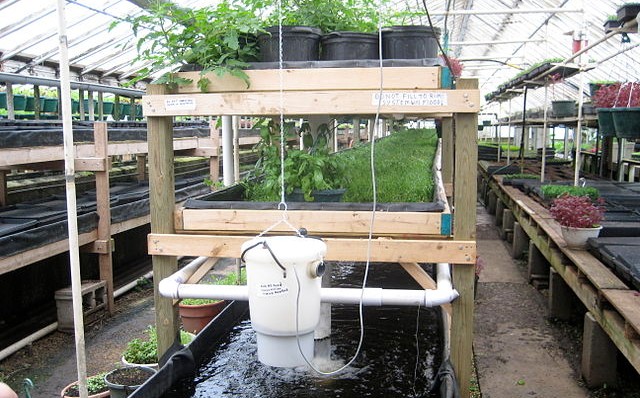Climate change and warming of sea surface temperatures are among the most oft-cited threats to coral reef ecosystems as they currently exist.
Despite the preponderance of scientific work on the issue, many, including even perhaps some in this hobby, deny most if not all of our current understanding of human contributions to global warming. That human contribution is primarily through an increasing atmospheric carbon dioxide concentration. Since carbon dioxide absorbs and re-emits infrared radiation that would otherwise be lost from Earth to space, in order to maintain a radiative “balance”, or equilibrium, the surface temperature of the Earth must increase. Now, in principle this is not in the least bit controversial. Humans emit carbon dioxide, which has an extremely long residence time in the atmosphere, and the Earth is radiatively imbalanced until a corresponding increase in global mean temperature occurs.
![Keeling Curve]()
However, reminiscent of tetra-ethyl lead and smoking-cancer linkage discussions of times past, many folks remain hard at work to maintain a public perception that correlation is not causation: essentially many attempts at a “death by a thousand cuts” of logical fallacy. Unfortunately, the momentum of this misinformation lobby has gotten to the point where, to paraphrase Prof. Andrew Dessler’s reaction to the new findings discussed below, it has become necessary to provide something analogous to dropping a rock and watching it fall in order to demonstrate to audiences that gravity is real.
That rock dropped in a monumental way this week in the journal Nature.
Feldman et al. have used Atmospheric Emitted Radiance Interferometry in both the Southern Great Plains and the Northern Slope of Alaska to explicitly detect the impact of rising carbon dioxide on the amount of longwave, infrared radiation that is returned to the Earth’s surface, instead of being lost into space. The instrument utilized is capable of measuring returning infrared radiation that is emitted by individual types of greenhouses gases. In other words, it is capable of distinguishing returning radiation of carbon dioxide from other well known greenhouse gas molecules such as methane and water vapor.
![Extended Figure 1 from Feldman et al. [2015]]()
What was found is that from between 2000-2010, a highly significant trend of increasing carbon dioxide-emitted infrared radiation returned to Earth’s surface, from a 22 ppm increase in atmospheric carbon dioxide concentrations. Additionally, the energy changes documented are highly consistent with previous work estimating the radiative forcing of carbon dioxide. At the end of the day, this should all but silence any skepticism regarding our knowledge that an increase in carbon dioxide concentrations in the atmosphere also directly increases the amount of infrared, heat energy being returned to Earth’s surface.… More:
The post The First Direct Observations of Anthropogenic Carbon Dioxide Induced Changes to Earth’s Radiative Budget appeared first on reefs.com.
 The Florida Aquarium in Tampa, Florida is looking to collaborate with The National Aquarium of Havana to come together to help protect coral reefs. The Florida Aquarium has delivered a memorandum of understanding for joint research to the National Aquarium of Havana. This would be the first partnership between Cuban and American Aquariums. The Aquarium’s goals are purely environmental, specifically to help stop decay of coral reefs. The National Aquarium of Havana has conducted extensive research on species of coral health which are not available in the U.S, and the combined research can aid to help save our coral reefs. The decline of coral reefs is a World wide problem, and it is great to see World wide initiative to try and combat it. The Florida Aquarium hopes to send representatives to Cuba in November. MORE… More:
The Florida Aquarium in Tampa, Florida is looking to collaborate with The National Aquarium of Havana to come together to help protect coral reefs. The Florida Aquarium has delivered a memorandum of understanding for joint research to the National Aquarium of Havana. This would be the first partnership between Cuban and American Aquariums. The Aquarium’s goals are purely environmental, specifically to help stop decay of coral reefs. The National Aquarium of Havana has conducted extensive research on species of coral health which are not available in the U.S, and the combined research can aid to help save our coral reefs. The decline of coral reefs is a World wide problem, and it is great to see World wide initiative to try and combat it. The Florida Aquarium hopes to send representatives to Cuba in November. MORE… More:





 She wrote dozens of articles for National Geographic. She discovered sleeping sharks in Mexico, which changed science view at the time that Sharks need to keep moving to stay alive. She wrote a best selling autobiography called ‘Lady With A Spear’, which chronicled her time in the South Pacific. She also served as a strong female role-model in the often male dominated world of Marine Biology. It is humbling to take a moment and honor this amazing womans life and contributions to the field.
She wrote dozens of articles for National Geographic. She discovered sleeping sharks in Mexico, which changed science view at the time that Sharks need to keep moving to stay alive. She wrote a best selling autobiography called ‘Lady With A Spear’, which chronicled her time in the South Pacific. She also served as a strong female role-model in the often male dominated world of Marine Biology. It is humbling to take a moment and honor this amazing womans life and contributions to the field. 

![Extended Figure 1 from Feldman et al. [2015]](http://cdn.reefs.com/blog/wp-content/uploads/2015/02/Screen-Shot-2015-02-27-at-10.54.34-AM.png)